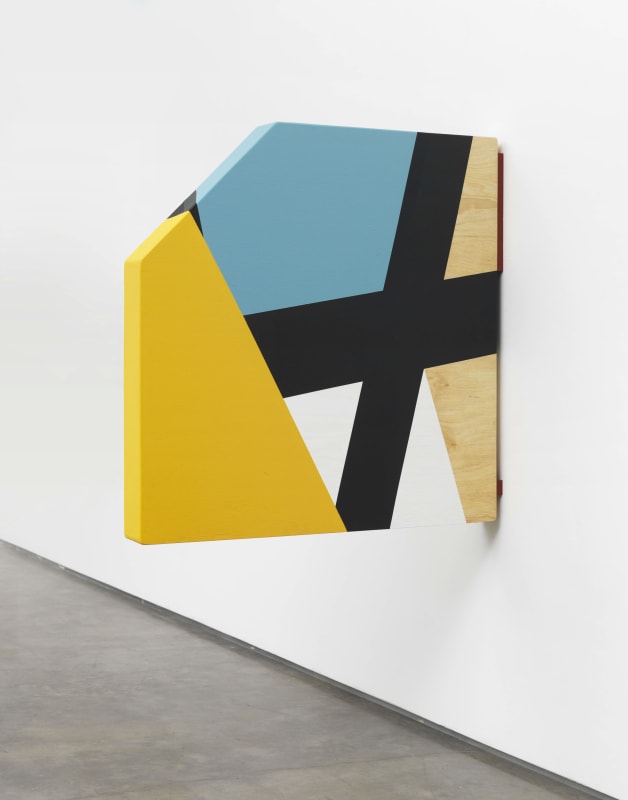BY PETER PLAGENS
A difficult question: How does a comparatively comfortable critic judge the art of someone raised in turmoil and hardship? In this case, the artist is Serge Alain Nitegeka (b. 1983), who had to flee Burundi as a child because of civil war—only to land in Rwanda in the midst of its genocide and subsequently find himself living in several more African countries before settling in Johannesburg.
Until now, art-world fame has come to him from site-specific installations of obstructing beams intended to convey viscerally, albeit somewhat abstractly, the difficulties encountered by refugees from war and revolution. Mr. Nitegeka told an interviewer last year, “I make each [installation] look and feel as if it’s about to collapse.” For this exhibition, however, Mr. Nitegeka has created hybrid objects: hard-edge paintings on wooden panels that are irregularly shaped and mounted high and low on, or perpendicular to, the wall. In color and arrangement, they evoke equally Franz Kline and Piet Mondrian.
Although it’s probably not true that with this new body of work Mr. Nitegeka has made a complete crossover from the powerfully referential to full abstraction, he’s headed in that direction. Until he gets where he’s going with these attractive but not quite grounded pieces, judgment stands suspended.


